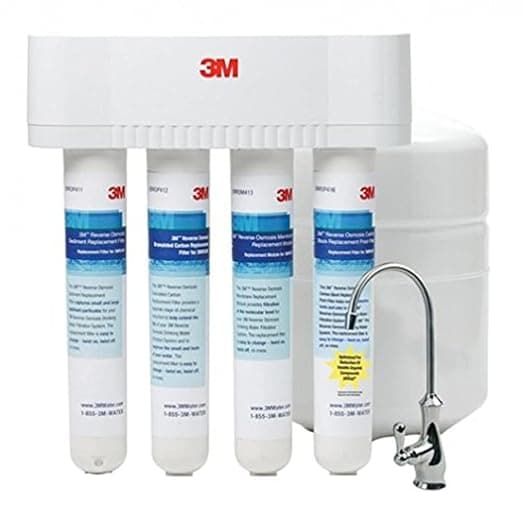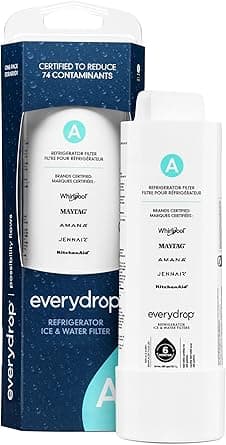Hammonton Tap Water Quality Report
Hammonton's water has 13 contaminants above EPA MCLGs. We recommend using a certified water filter.
Utility
HAMMONTON WATER DEPT
People Served
12,153
MCL Violations
0
Last Updated
Jul 26, 2024
Is Hammonton Tap Water Safe to Drink?
Hammonton's water has 13 contaminants above EPA health-based guidelines. We strongly recommend using a certified water filter to reduce exposure to these contaminants. Check our filter recommendations below for NSF-certified options that can remove the specific contaminants found in Hammonton's water.
The data below shows test results from HAMMONTON WATER DEPT, which serves 12,153 people in the Hammonton area. Water quality testing is conducted regularly and reported to the EPA. This report was last updated Jul 26, 2024.
Hammonton Water Quality Test Results
Key Water Quality Metrics
Contaminants Detected
⚠️ Contaminants Above EPA MCLG (13)
Arsenic
What is Arsenic?
Naturally occurring element that has both inorganic and organic forms
Health Effects
The EPA drinking water standards for arsenic are based on adverse effects to the cardiovascular, pulmonary and liver systems in drinking water with inorganic arsenic, as well as an increased risk of cancer. Long term health effects of total arsenic in drinking water include bladder, GI tract, kidney, liver, lung, pancreas and skin cancer, cardiovascular effects, pulmonary and gastrointestinal effects, ocular, immunological, neurological and reproductive effects. Arsenic found in epidemiological studies include developmental effects, socioeconomic and genotoxicity.
Affected Organs
Common Sources
Tetrachloroethylene
What is Tetrachloroethylene?
Volatile organic compound (VOC), also known as perchloroethylene (PCE), known as the 'dry cleaning fluid'
Health Effects
Health protective levels for tetrachloroethylene in drinking water have been set by the EPA based on an increased risk of cancer and liver problems after long term exposure. Both human and animal studies show that tetrachloroethylene exposure increases the risk of cancer and impacts the central nervous system, kidneys, development and reproduction. Animal studies also show impacts on the liver.
Affected Organs
Common Sources
Bromodichloromethane
What is Bromodichloromethane?
Member of trihalomethanes (THMs) that form in water treated with chlorine
Health Effects
Health protective benchmarks for BDCM are based on carcinogenicity and liver toxicity observed in animal studies. The EPA has classified BDCM as a probable human carcinogen. Results from animal studies also suggest that kidney, immune system, spleen, and developmental toxicity are associated with exposure to BDCM. BDCM has been shown to produce DNA changes (genotoxicity) in laboratory studies.
Affected Organs
Common Sources
Radium, combined (-226 & -228)
What is Radium, combined (-226 & -228)?
Radium is a naturally occurring radioactive metal that is part of the uranium decay series. It is found in trace amounts in soil, rock, and water. Radium is known for its radioactive properties and can emit alpha, beta, and gamma radiation. It is a heavy metal and can be harmful to human health when ingested or inhaled.
Health Effects
Exposure to radium can lead to serious health issues, including an increased risk of cancer, particularly bone cancer. It can also cause damage to the bone marrow and other organs. Long-term exposure may result in anemia, immune system suppression, and other health complications.
Affected Organs
Common Sources
Uranium
What is Uranium?
Uranium is a weakly radioactive heavy metal found naturally in bedrock and used in nuclear weapons, some ceramics, electron microscopy stains, photography toners, and certain fertilizers. Uranium is weakly radioactive because all of its isotopes (Uranium-234, Uranium-235, and Uranium-238) are unstable. Ninety-nine percent of naturally existing uranium is in the isotope form uranium-238. The EPA has established a maximum contaminant level for uranium in drinking water in response to human and animal studies indicating kidney toxicity and and increased risk of cancer.
Health Effects
Health protective benchmarks for uranium are based on adverse kidney system effects observed in both humans and animals and an increased risk of cancer. Animal studies have also shown female reproductive system and developmental toxicity, as well as genotoxicity, related to uranium exposure.
Affected Organs
Common Sources
Gross Alpha (Excl. Radon and Uranium)
What is Gross Alpha (Excl. Radon and Uranium)?
Gross alpha activity is a measure of the total alpha particle activity in a water sample, excluding radon and uranium. It is used to assess the presence of radioactive contaminants in drinking water.
Health Effects
Exposure to high levels of alpha radiation can lead to an increased risk of cancer, particularly in the bones and other tissues where alpha particles can deposit energy.
Affected Organs
Common Sources
Radium 226
What is Radium 226?
Radium-226 is a radioactive isotope of radium, which is a naturally occurring element found in uranium ores. It is a decay product of uranium-238 and is known for its radioactive properties, emitting alpha particles and gamma radiation.
Health Effects
Exposure to Radium-226 can lead to serious health issues, including an increased risk of bone cancer and other malignancies. It can accumulate in bones and tissues, leading to long-term health effects due to its radioactivity.
Affected Organs
Common Sources
Total THMs
What is Total THMs?
Group of contaminants that form in drinking water systems when a disinfectant, typically chlorine, reacts with organic matter
Health Effects
Drinking water standards for total THMs are based on evidence of carcinogenicity in human and animal studies, as well as liver and kidney toxicity observed in animal studies. Individual THMs have been further associated with developmental, immune, spleen, and genotoxicity.
Affected Organs
Common Sources
Dibromochloromethane
What is Dibromochloromethane?
Member of trihalomethanes (THMs) that form in water treated with chlorine
Health Effects
Health protective benchmarks for DBCM have been developed based on liver toxicity and carcinogenicity observed in animal studies. EPA has classified DBCM as a possible human carcinogen based on animal evidence, while IARC (International Agency for Research on Cancer) says it is unclassifiable as a human carcinogen. Kidney toxicity has also been associated with DBCM based on evidence from animal studies. DBCM has been shown to produce DNA changes (genotoxicity) in laboratory studies.
Affected Organs
Common Sources
Aluminum
What is Aluminum?
Naturally-occurring metal found in the Earth's crust with multiple industrial uses, including the construction of buildings and powerlines, and the manufacture of vehicles, consumer electronics, household appliances, and kitchenware. It is also frequently used in municipal water treatment to clarify water from lakes and reservoirs. Health effects of aluminum exposure are inconclusive but actively researched.
Health Effects
Much of the current research on the health effects of aluminum in drinking water is still inconclusive and controversial. Health protective benchmarks for aluminum in drinking water set by the California Office of Environmental Health Hazard Assessment are based on potential neurotoxicity and developmental toxicity in premature infants. People more susceptible to aluminum impacts include infants and people with impaired kidney function.
Affected Organs
Common Sources
Cadmium
What is Cadmium?
Heavy metal most often found in drinking water due to the corrosion of galvanized pipes. It has a variety of industrial uses, primarily as a component in batteries, pigments, coatings, and electroplating. It also occurs as a natural impurity in phosphate rocks, and is present in certain phosphate fertilizers as a result. Cadmium can accumulate in plants and organisms throughout the food chain from contaminated soil and water. Long-term exposure to excess cadmium may lead to kidney dysfunction, skeletal defects, and multiple types of cancer.
Health Effects
Health protective benchmarks for cadmium in drinking water are based on kidney toxicity and skeletal defects (osteoporosis, increased bone fractures, decreased bone mineral density). In animal studies, cadmium has been shown to cause adverse developmental effects as well.
Affected Organs
Common Sources
Chloroform
What is Chloroform?
Member of trihalomethanes (THMs) that form in water treated with chlorine and is generally the most abundant THM formed in drinking water
Health Effects
Health protective benchmarks for chloroform have been developed based on kidney and liver carcinogenicity observed in animal studies, and liver toxicity observed in occupational studies. The EPA classifies chloroform as a probable human carcinogen based on animal evidence, and there is additional epidemiological evidence that may increase the risk of colon and bladder cancer in humans. Results from animal studies also suggest that exposure to chloroform can cause liver, developmental and immune toxicity. Acute exposure to low levels of chloroform will cause nervous system toxicity.
Affected Organs
Common Sources
Beryllium
What is Beryllium?
Alkaline metal that occurs naturally in the earth's crust in minerals. It has many uses in the electronics, aerospace, and defense industries. Exposure to elevated beryllium levels in drinking water can occur when water sources are polluted by industrial activity. The EPA drinking water limits on beryllium are based on adverse gastrointestinal health effects seen in animal studies.
Health Effects
Drinking water standards for beryllium are based on animal studies that have shown elevated beryllium exposures can lead to gastrointestinal tract lesions.
Affected Organs
Common Sources
Understanding the Data
This data comes from your local water utility testing. The bar charts compare detected levels against EPA's Maximum Contaminant Level Goal (MCLG). Contaminants above the MCLG are shown by default and may require filtration. All other tested contaminants are within safe levels and can be viewed by expanding the section above.
Recommended Water Filters for Hammonton
Based on Hammonton's water quality data, these NSF-certified filters are recommended to remove contaminants above EPA MCLGs.

Solventum Purification Inc.
3MRO401
NSF Certified:
Daily Production
11.48 gpd
Removes 15 contaminants:
Arsenic, Barium, Cadmium, Chromium (Total), Chromium (VI) +10 more

Solventum Purification Inc.
3MRO301
NSF Certified:
Daily Production
11.48 gpd
Removes 15 contaminants:
Arsenic, Barium, Cadmium, Chromium (Total), Chromium (VI) +10 more

Whirlpool Corporation
W11256135
NSF Certified:
Capacity
1001 gal
Filter Life
3 mo
Flow Rate
0.7 gpm
Removes 19 contaminants:
1,2 Dichlorobenzene, 1,4 Dichlorobenzene, 2,4-D, Asbestos, Atrazine +14 more

Whirlpool Corporation
W11569861
NSF Certified:
Capacity
1001 gal
Filter Life
3 mo
Flow Rate
0.52 gpm
Removes 22 contaminants:
1,2 Dichlorobenzene, 1,2,4 Trichlorobenzene, 1,4 Dichlorobenzene, 2,4-D, Asbestos +17 more
Verify Your Water Quality with Independent Testing
With 13 contaminants above EPA health guidelines, independent laboratory testing provides a second opinion and can track changes over time.

SimpleLab
Advanced Home Water Test
$369
Most comprehensive home water test including all standard tests plus additional parameters for ultimate peace of mind.

SimpleLab
Standard Home Water Test
$232
Comprehensive water analysis testing over 200 contaminants including bacteria, heavy metals, and chemical compounds.

Tap Score
Advanced Microplastics Test
$636
Cutting-edge testing for microplastics particles in drinking water using advanced laboratory techniques.
Frequently Asked Questions About Hammonton Tap Water
Hammonton's water has 13 contaminants above EPA MCLGs. We strongly recommend using a certified water filter to reduce exposure to these contaminants. Check our filter recommendations below for NSF-certified options that can remove the specific contaminants found in Hammonton's water.